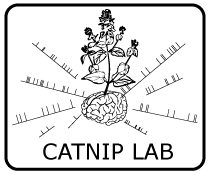Vision
We aim to develop effective systems-level descriptions of neural dynamics in both healthy function and dysfunction. Building on the foundations of dynamical systems, cybernetics, Bayesian inference, signal processing, information theory, and stochastic processes, The Lab works to advance the scientific language for neural dynamics—one that explains observations and generates specific, testable predictions.
To build models of neural computation that are tightly tied to biology and experimental observations, we work closely with experimental and clinical collaborators. We develop statistical methods for analyzing spatiotemporal neural and behavioral time series, create theories that distill idiosyncratic and noisy model differences into rigorous interpretations, and generate data-driven evidence for and against concrete scientific hypotheses.
We are broadly interested in mesoscopic (circuit-level) mechanisms and information processing in sensory perception, working memory, learning, and motor control. To accelerate discovery, we develop real-time machine-learning and control methods, design next-generation experiments, and build tools that integrate information across heterogeneous recordings.
Inference of effective dynamical systems
We help neuroscientists analyze neural and behavioral recordings without averaging to their full potential.
What is the right abstraction to describe the collective behavior of neurons and their coupling to the environment? Because neural systems exhibit rich temporal structure and memory across many time scales, we view the dynamical-systems perspective as an essential part of any explanation. Rather than trying to recover all biological details, we focus on learning effective dynamical systems from data—models that capture the key structure needed to explain observations and predict the future.
Improving our language for neural computation
We develop mathematical tools to turn high-dimensional noisy data into interpretable insights.
While dynamical-systems theory provides a universal language for studying change, the field often overemphasizes vector-field topology (e.g., fixed points) as the primary interpretive framework. The language we use to describe dynamical mechanisms constrains which solutions we consider plausible and which phenomena we can interpret. We identify and incorporate mathematical concepts that overcome current limitations, and we test them on real neural and behavioral data.
Neurotechnology for real-time experiments
We advance real-time closed-loop tools for next-generation neuroscience experiments and clinical devices.
In the era of large-scale recordings, the experimenter’s intimate, moment-to-moment interaction with the neural system is often replaced by the hope that post hoc “big data” analysis will answer systems-level questions. The long delay between data collection and analysis is a major bottleneck to neuroscientific progress. We develop sample-efficient, model-based methods for data collection, online analysis, and control that leverage prior knowledge to form a tighter loop between experimentalists and the neural systems they study and perturb.
Integrative neuroscience
We are on a mission to integrate neural data across sessions, context, animals, and species, to discover the organizing principle of how the brain works.
What is the right level of abstraction at which organizing principles of the brain can be aligned across diverse datasets? The field currently consists of many groups studying different brain areas and behaviors with distinct experimental and theoretical approaches. We explore “meta-dynamical” descriptions to test whether data-driven integration and discovery of emergent principles is possible beyond neuron-level, latent-state, or single-dynamical-systems descriptions.
